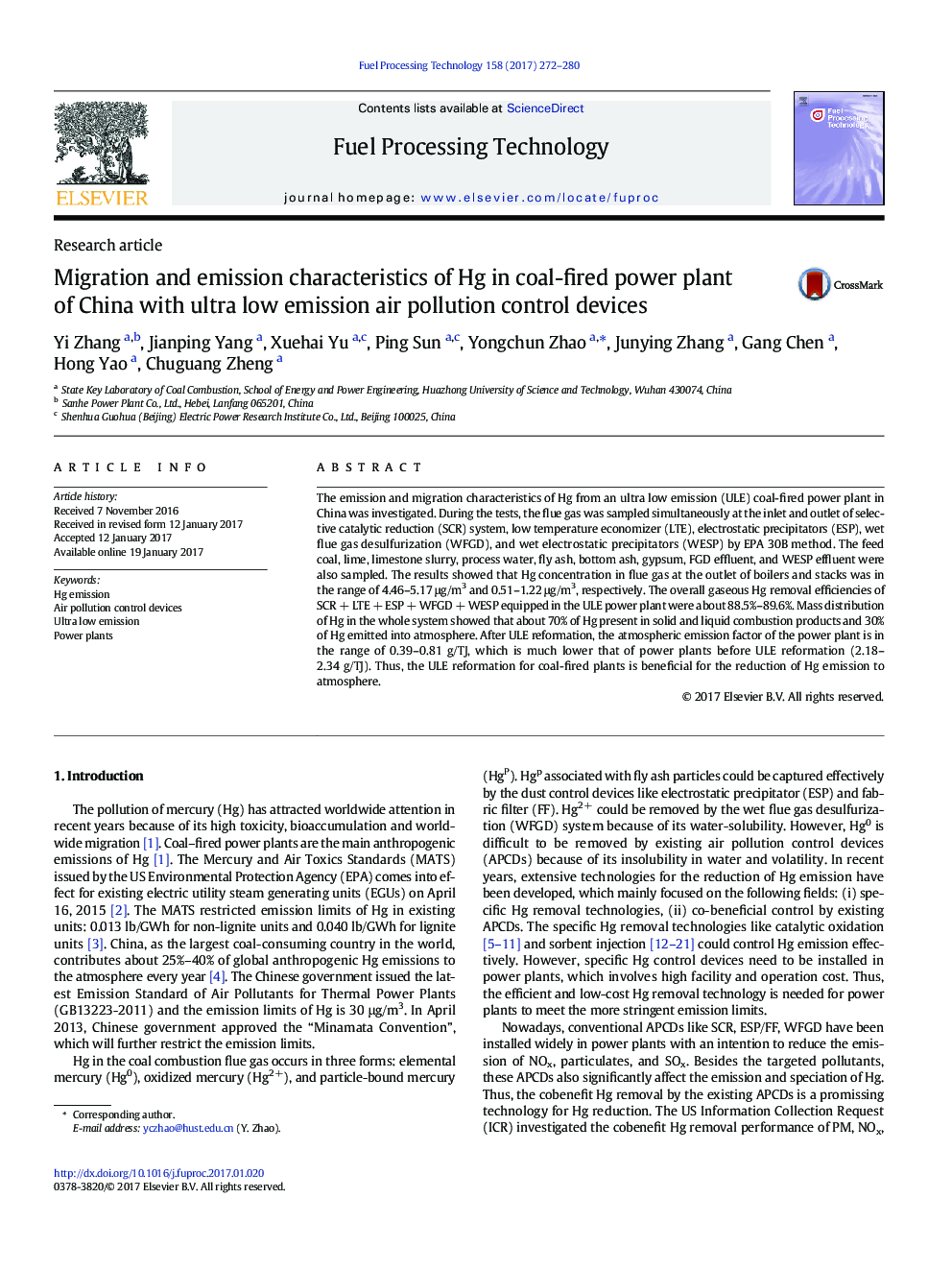| Article ID | Journal | Published Year | Pages | File Type |
|---|---|---|---|---|
| 4768947 | Fuel Processing Technology | 2017 | 9 Pages |
â¢The emission characteristics of Hg from an ULE coal-fired power plant in China were investigated.â¢The gaseous Hg removal efficiencies of APCDs in the ULE power plant were about 88.5%-89.6%.â¢70% of Hg present in solid and liquid combustion products and 30% of Hg emitted into atmosphereâ¢The ULE reformation is beneficial for the reduction of Hg emission to atmosphere.
The emission and migration characteristics of Hg from an ultra low emission (ULE) coal-fired power plant in China was investigated. During the tests, the flue gas was sampled simultaneously at the inlet and outlet of selective catalytic reduction (SCR) system, low temperature economizer (LTE), electrostatic precipitators (ESP), wet flue gas desulfurization (WFGD), and wet electrostatic precipitators (WESP) by EPA 30B method. The feed coal, lime, limestone slurry, process water, fly ash, bottom ash, gypsum, FGD effluent, and WESP effluent were also sampled. The results showed that Hg concentration in flue gas at the outlet of boilers and stacks was in the range of 4.46-5.17 μg/m3 and 0.51-1.22 μg/m3, respectively. The overall gaseous Hg removal efficiencies of SCR + LTE + ESP + WFGD + WESP equipped in the ULE power plant were about 88.5%-89.6%. Mass distribution of Hg in the whole system showed that about 70% of Hg present in solid and liquid combustion products and 30% of Hg emitted into atmosphere. After ULE reformation, the atmospheric emission factor of the power plant is in the range of 0.39-0.81 g/TJ, which is much lower that of power plants before ULE reformation (2.18-2.34 g/TJ). Thus, the ULE reformation for coal-fired plants is beneficial for the reduction of Hg emission to atmosphere.
